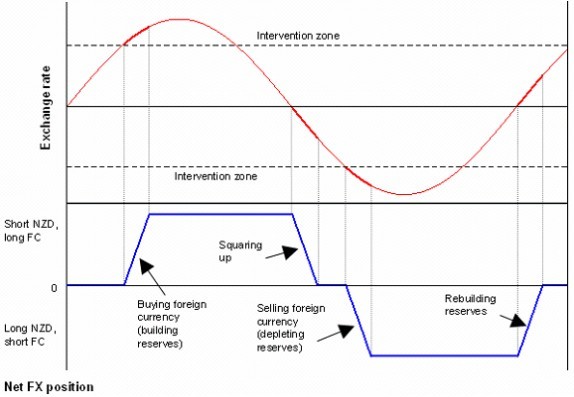A Finance Student s Notes How to Reduce Foreign Exchange Exposure
Post on: 26 Сентябрь, 2015 No Comment

How to Reduce Foreign Exchange Exposure
The risk posed by foreign exchange transactions stems from the volatility of the exchange rate, the volatility of the interest rates, and factors unique to individual companies which are interrelated. To protect and hedge against adverse currency and interest rate changes, multinational corporations need to take concrete steps for mitigating these risks.
Another option to minimize unfavorable foreign exchange rates is to develop a strategy to hedge foreign currency exposure. By hedging, your company is essentially taking out an insurance policy against a negative event. While hedging will not prevent a negative event from happening, it can reduce or eliminate the impact of the negative event if it occurs.
The following are some of the most common types of foreign currency hedging vehicles used in today’s markets as a foreign currency hedge. While retail forex traders typically use foreign currency options as a hedging vehicle. Banks and commercials are more likely to use options, swaps, swaptions and other more complex derivatives to meet their specific hedging needs.
Forward Contracts — A foreign currency contract to buy or sell a foreign currency at a fixed rate for delivery on a specified future date or period. Foreign currency forward contracts are used as a foreign currency hedge when an investor has an obligation to either make or take a foreign currency payment at some point in the future. An advantage of the forward contract is that it removes the impact of foreign exchange volatility on the profit or cost of a future transaction. Once the rate has been agreed upon, your company is protected from all future exchange rate fluctuations. A disadvantage of the forward contract is that it removes the opportunity to enjoy upside potential if the rate is more favorable for your company.
* Important: Please note that forwards contracts are different than futures contracts. Foreign currency futures contracts have standard contract sizes, time periods, settlement procedures and are traded on regulated exchanges throughout the world. Foreign currency forwards contracts may have different contract sizes, time periods and settlement procedures than futures contracts. Foreign currency forwards contracts are considered over-the-counter (OTC) due to the fact that there is no centralized trading location and transactions are conducted directly between parties via telephone and online trading platforms at thousands of locations worldwide.
Foreign Currency Options — A financial foreign currency contract giving the buyer the right, but not the obligation, to purchase or sell a specific foreign currency contract (the underlying) at a specific price (the strike price) on or before a specific date (the expiration date). The amount the foreign currency option buyer pays to the foreign currency option seller for the foreign currency option contract rights is called the option premium.
A foreign currency option provides protection from an adverse exchange rate movement, while enabling the owner of the option to benefit from favorable movements. The key characteristic of a foreign currency option is that it is a right rather than an obligation. A disadvantage of an option is that it requires a premium to be paid at the time the option is purchased.
Interest Rate Options — Similar to foreign currency options, however interest rate is used instead of foreign currency.
Foreign Currency Swaps — A financial foreign currency contract whereby the buyer and seller exchange equal initial principal amounts of two different currencies at the spot rate.
Interest Rate Swaps — A financial interest rate contracts whereby the buyer and seller swap interest rate exposure over the term of the contract. The most common swap contract is the fixed-to-float swap whereby the swap buyer receives a floating rate from the swap seller, and the swap seller receives a fixed rate from the swap buyer.

Spot Contracts — A foreign currency contract to buy or sell at the current foreign currency rate, requiring settlement within two days. As a foreign currency hedging vehicle, due to the short-term settlement date, spot contracts are not appropriate for many foreign currency hedging and trading strategies. Foreign currency spot contracts are more commonly used in combination with other types of foreign currency hedging vehicles when implementing a foreign currency hedging strategy.
Example 1
Tennspo Ltd buys goods from a Norwegian supplier on 2 January 2005 for Norwegian krone (NOK) 1 million. The NOK 1 million is payable on 31 March 2005. At 2 January, the exchange rate is NOK 12.50/.
On 2 January, the company enters into a forward contract to buy NOK 1 million, for delivery on 31 March, at a forward rate of NOK 12.80/. It therefore knows that, whatever the spot rate on 31 March, it is going to have to pay 78,125 (1 million/12.80) to settle the liability.
Example 2
The facts are as in example 1, except that the company accounts for the purchase and the forward currency contract separately. The exchange rate at 31 March is NOK 13.00/.














